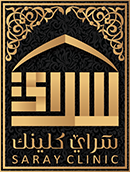Are you also concerned about the progression of your varicose veins and what to know about all its stages to understand the worst possible scenario it can take you to? You are at the right place, then.
Here, we will share all the varicose vein stages in detail below. There are seven stages of varicosis. These stages are divided according to the severity of the infection. Furthermore, we will also share when you need to see a doctor to help you with the timely management and treatment of this condition.
This brief guide will cover everything you need to know about varicose veins and their treatment. Let’s start with a quick intro and the symptoms of this condition to help you diagnose it.
Varicose Veins And Their Symptoms
Varicose veins are a common condition where your veins get swollen, twisted, and cause discomfort. It usually occurs due to the vein walls or valves. It leads to blood pooling and further complications. It can reflect a wide range of symptoms, depending on the stage or severity of varicose veins. Let’s take a look at the common symptoms associated with it.
- Visible, bulging veins
- Achy or heavy feeling in the legs
- Pain or throbbing
- Swelling
- Itching or burning
- Muscle cramps
- Discoloration of the skin
- Skin ulcers
7 Stages Of Varicose Veins
Varicose veins can be divided into seven stages. These are divided based on the severity of the infection. Treatment in the early stages can save you a lot of trouble. Let’s check out the details of these stages to educate you about them.
Achy Or Tired Legs
The first stage is achy or tired legs. Here, you feel very mild symptoms or even no symptoms at all. You may even not feel any visible symptoms at all. It is the very initial stage and can be prevented by taking the necessary precautions.
Crawling Or Spider-Like Veins
The next stage on our list is crawling. It is generally known as spider-like veins. In this stage, your veins become visible on your skin. You notice it in the blue or purple lines on your skin. This stage is usually not painful, but in some cases, it may cause pain from these lines. It takes us to the next stage.
Swollen Veins (Varicosities)
The third stage is a swollen vein. This is the stage where the visible and invisible symptoms are very clear. Your skin color gets dark purple, blue, or red. You start feeling itchiness, pain, and swelling. Your veins may even swell up to 3 millimeters wide. You may also face trouble performing your routine activities like wearing fabrics, applying skin cream, shaving, etc.
Edema And Leg Fatigue
The next varicose vein stage is edema or leg fatigue. The symptoms get mild to severe at this stage. It happens due to the leakage or bursting of veins. The blood pool causes swelling in this phase without any skin changes. You often feel the problem of standing longer at this stage.
Ankles Changes
The fifth stage we have is ankle changes. In this stage, the veins of your ankles start getting affected. You will be able to notice crawling or spidery veins on your ankles. Moreover, you will also start feeling discomfort in your ankles at this stage as well.
Skin Changes
The 6th varicose vein stage is skin changes. As the name indicates, you start getting clear, visible changes in your skin. You will notice the change in your skin texture as well. Your skin will slowly get darker and more sensitive to pain.
Ulcers
The last stage of varicosities is getting ulcers. It is the worst form of this disease. You can notice visible wounds on your skin with severe pain. It can be both a healed and an active ulcer. Severe ulcers may also cause pus drainage from wounds. You must seek immediate medical help in this case. It is because there is a risk of blood clot development in this case, which may be life-threatening.
When Should I Visit A Doctor?
Varicose veins are a common problem, but timely intervention is essential for their effective treatment. You should not take it lightly from the start, and you should get medical help as soon as you diagnose it. You may try non-medicated remedies during the first 2 stages or mild symptoms of this condition.
If the symptoms persist or start getting worse, then you must see a doctor. Beware; it can not only affect your daily life activities; it’s worst condition can even be life-threatening. That’s why early detection and intervention are essential. Follow the recommended treatment option by your doctor for effective treatment.
Final Words
From no visible symptoms to ulcers, these were all the seven varicose vein stages. You should understand its sensitivity and how this condition can get worse and start timely treatment. Visit a doctor and follow his prescribed treatment to get rid of it.
Furthermore, make additional lifestyle changes in advance as prevention if you have genetically congested veins. Want to know anything else? You are always welcome in the comment section.
